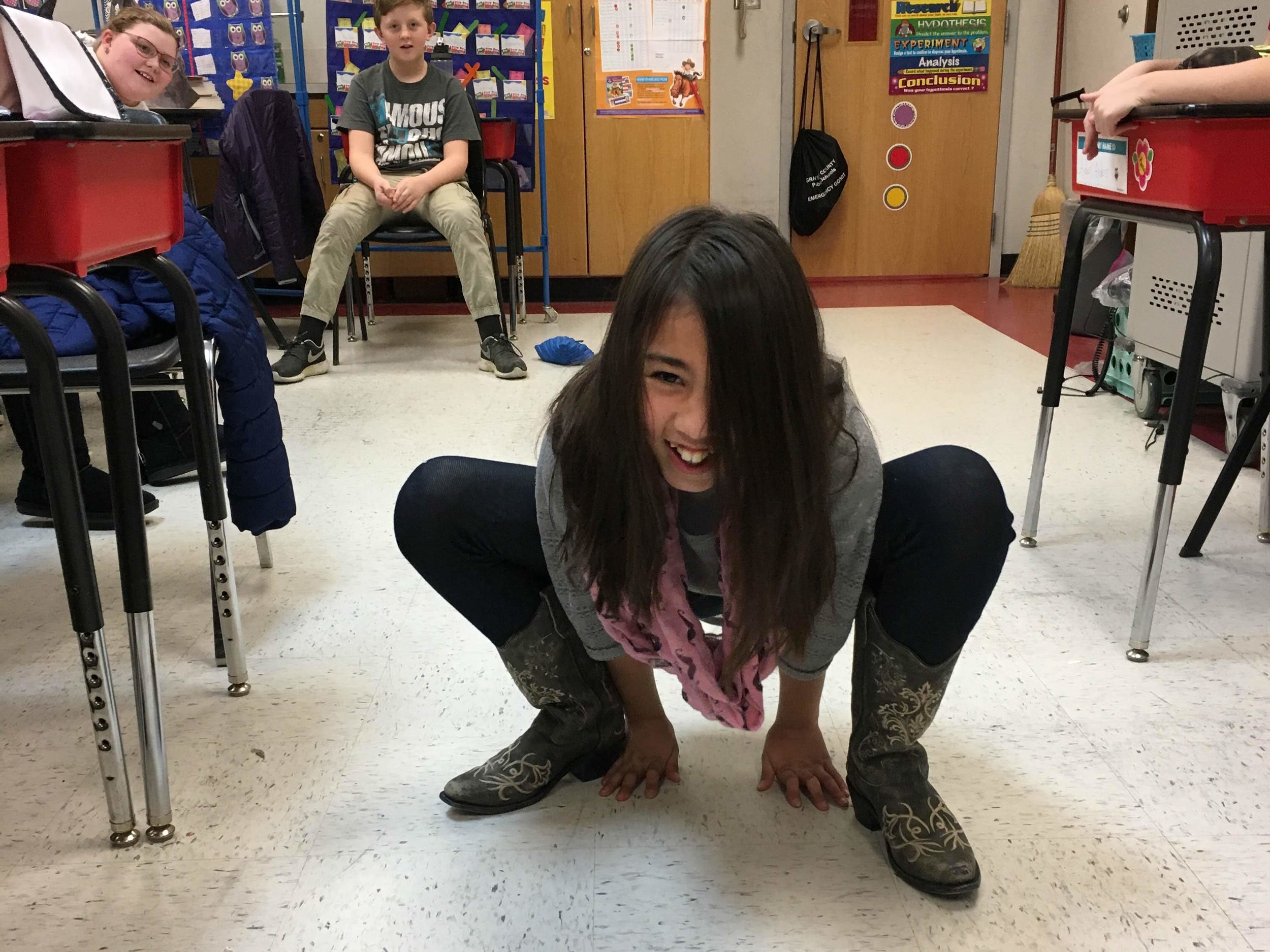Happenings with BRDC in the Schools
Each month, BRDC shares elements of the natural history of the region with the students in elementary schools in Grayson and Washington Counties.
The winter’s cold causes the vegetation to die back and expose the rocks, making January, although cold, the perfect time to study geology. With first graders, we share the world of long ago with a close look at fossils and how they are formed. Using clay and shark teeth, the kids create a mold of that tooth showing how the “impression” is made and left behind as a treasure to be discovered later. The fourth graders study the rock cycle and use Play-Doh as the medium in which to create sedimentary, metamorphic, and igneous rock. This “hands-on” manipulation emphasizes the power of the Earth’s heat and pressure to form and reform our geology.
February brings the snow and the ability to follow tracks. Tracks and signs are always a fun way to learn about the fauna of the region. Learning how to identify an animal from the signs left behind engages our students on a deeper level. Making prints and seeing them in sand leaves an “impression” on the students. They study and try to imitate various methods of animal walking patterns to better understand animal behaviors and actions.
March is for marsupials and marvelous adaptations. The first graders learn about the only North American marsupial, the Virginia opossum. We call it the superhero of mammals due to its immune system and ability to survive the most deadly of toxins. Students develop an appreciation for the niche the opossum fills in its environment and ours.
The study of adaptation is the focus with the fourth grade science classes. Colors and patterns as part of an organism’s adaptation, is studied. Does this organism blend in or stand out? Why? Is it a warning, or for attraction, mimicry, or camouflage? The students explore the answers to these questions by placing certain organisms into their respective category and debate their reasoning. This exercise fosters critical thinking skills and pushes the students to think deeper about why an organism looks like it does.
The cold of winter is slowly leaving and the warmth of spring is bringing new life to the Blue Ridge. We are looking forward to sharing those happenings too!


